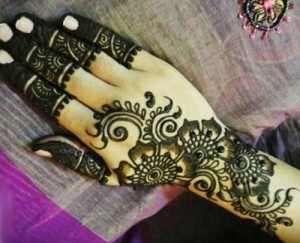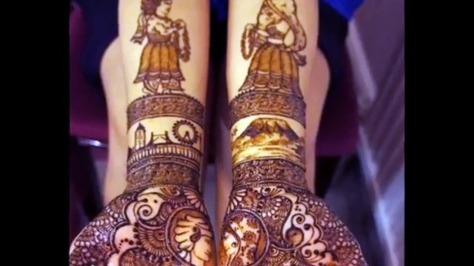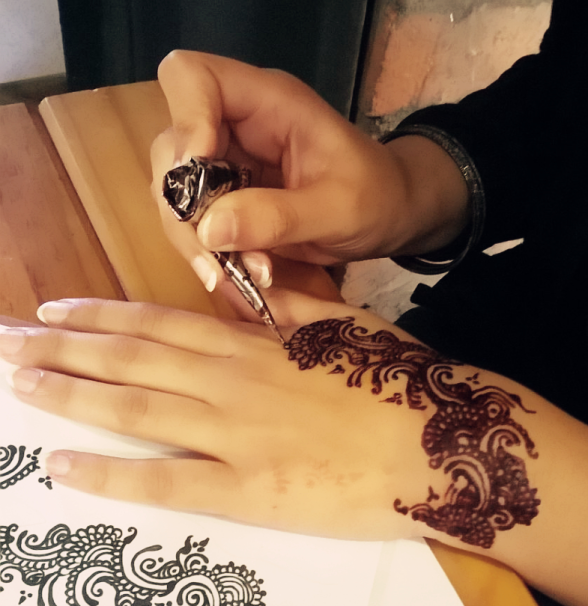I’m in Harare, Zimbabwe at the moment and one of my mother’s friends pointed out that my henna was an Arabic design. Since then I’ve been wondering what the difference between Arabic and Indian designs are as well as what I actually prefer. Having done some research, this is what I found;

This is a lovely example of an Arabic Design
The Arabic Henna Style has a lot of bold lines, leaves and floral patterns. The designs rely on a spatial quality rather than covering the entire area. The designs often leave big spaces between patterns made up of large shapes and some solid shapes, i.e. completely filled with henna.
Indian Henna Designs are known for their coverage and narrative quality. They incorporate a story into the design such as a wedding scenario or musical instruments. Indian designs often center on motives such as peacocks and paisleys with floral or lacy patterns. They don’t often leave much space as Arabic patterns do and larger shapes are close together and usually filled with tiny intricate patterns. The designs often have a repetitive quality with parallel shapes or lines and are from the fingertip to elbow in terms of length. You can find out about motives here; Henna designs and what they could mean?

This is the perfect example of henna with a narrative quality
Modern day brides have adapted a trending Indo-Arabic henna style for their special day. A combination of the two styles has a greater tendency to be a unique pattern. As far as my personal style of henna, I like to keep things simple and pretty. You can check out My Designs or visit my Facebook Page Henna By Vanz
While researching traditional Arabic and Indian henna, I also came across these henna designs; Moghlai Henna, Pakistani Henna, Moroccan Henna and Khaliji Henna. I’m going to try out some of these for my next blog!
